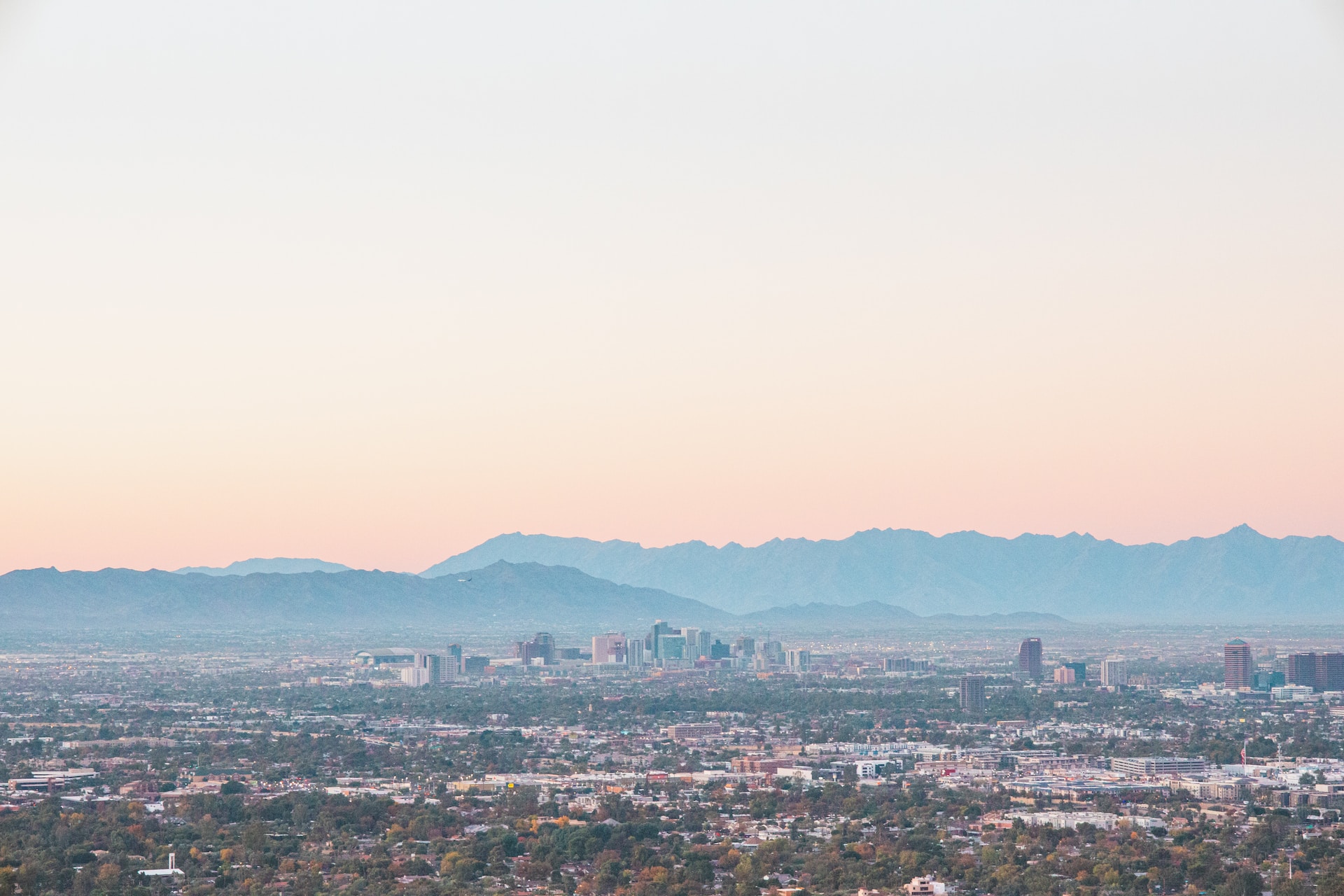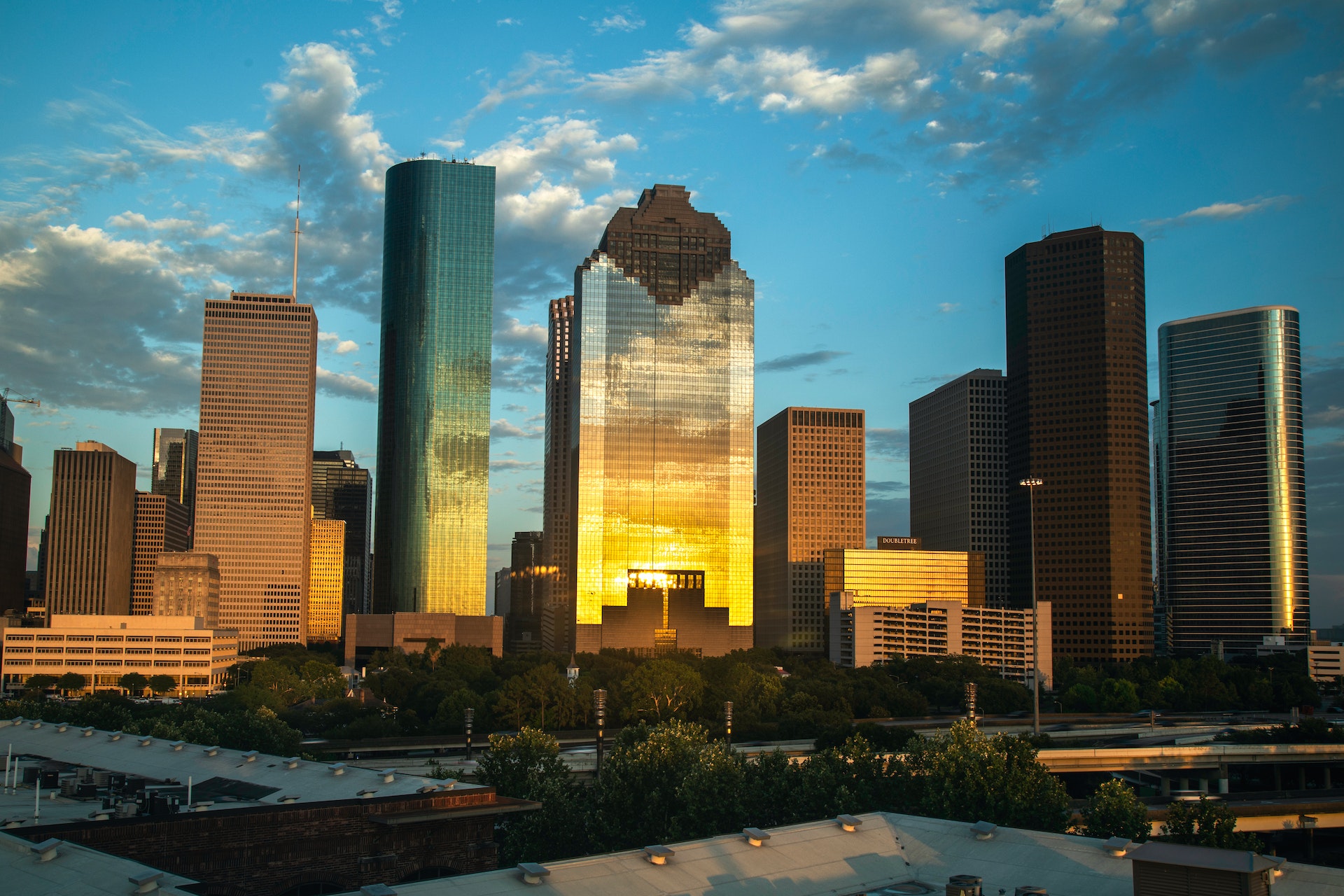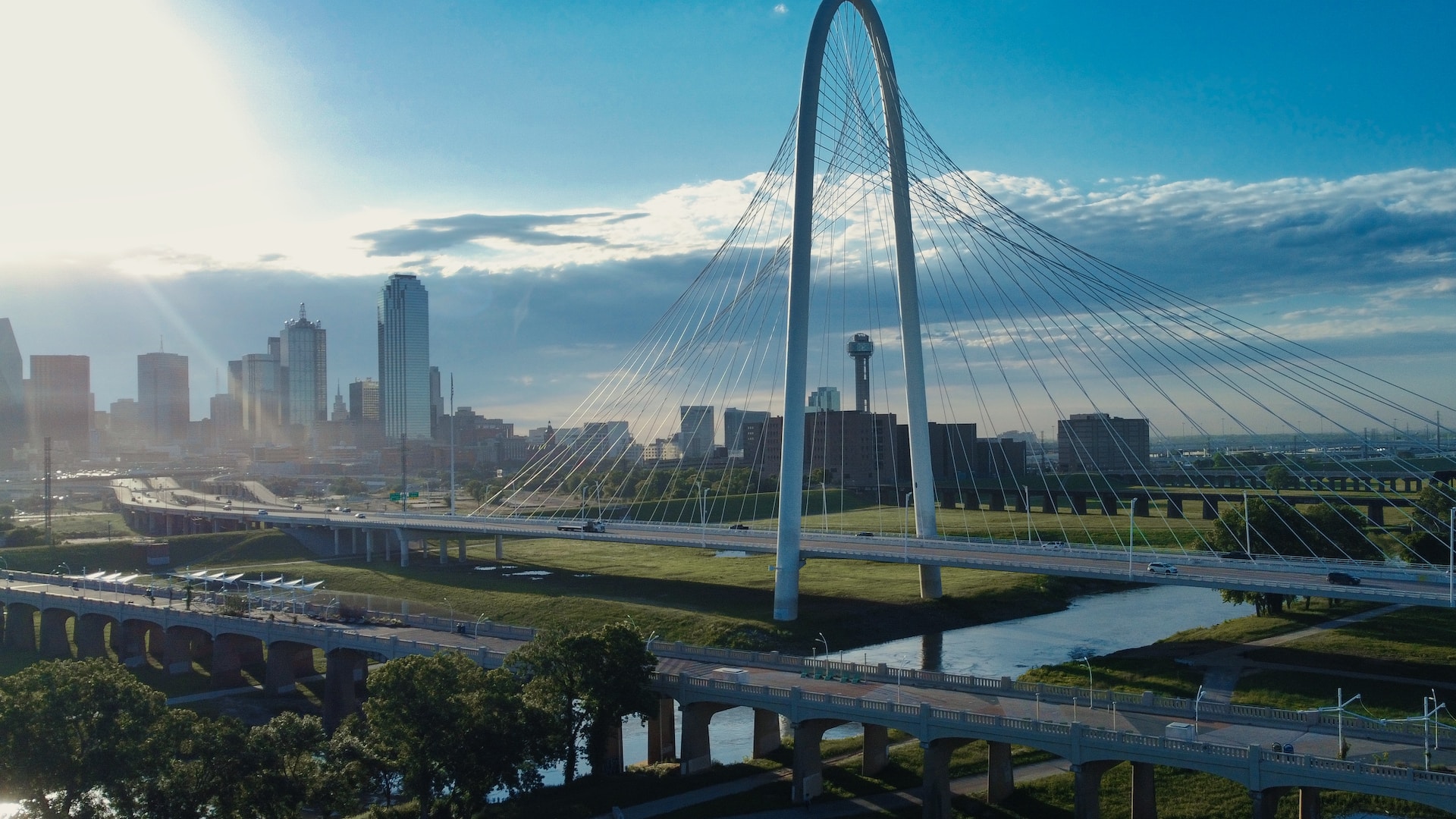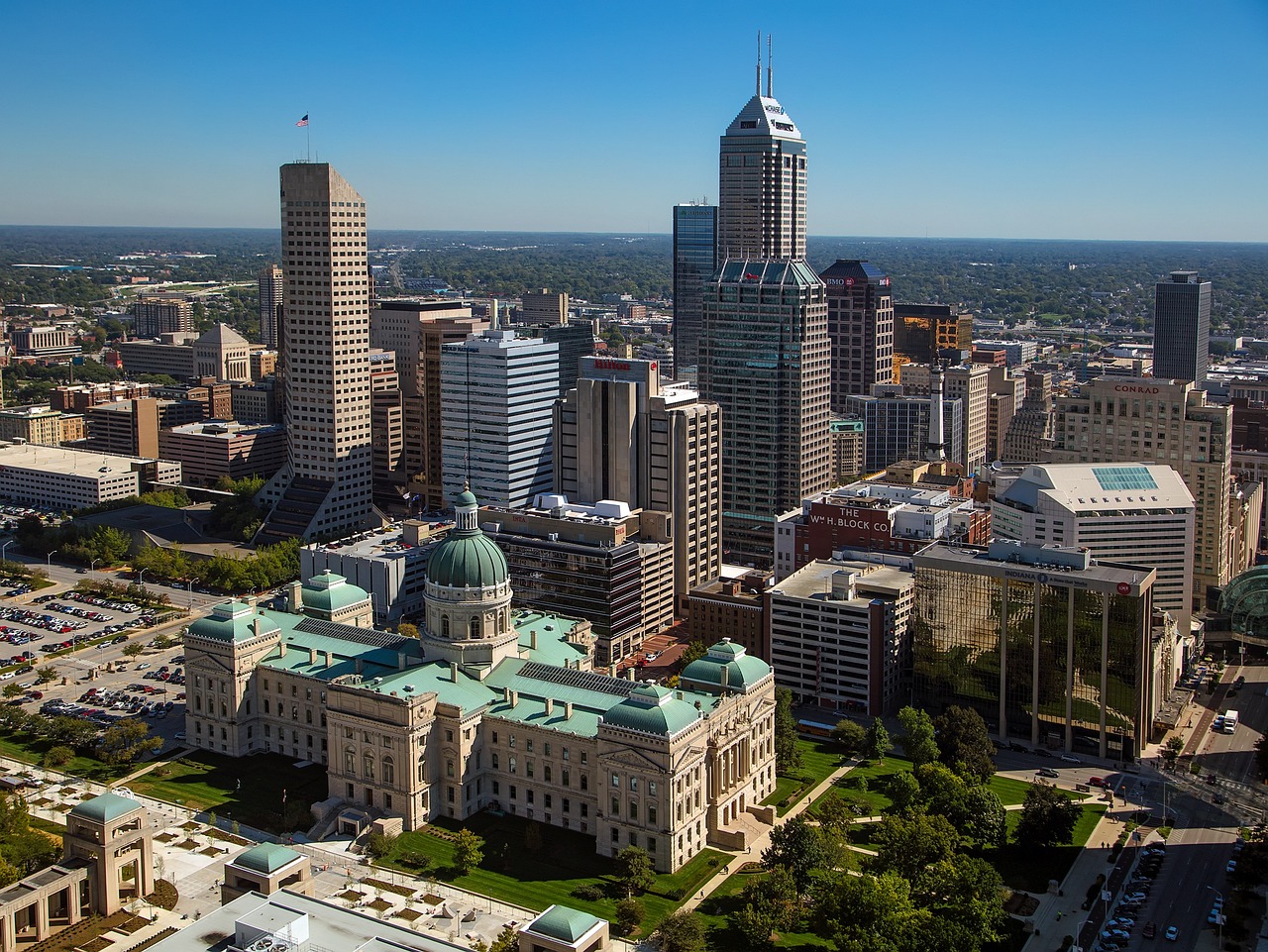Phoenix, Arizona, is not just another desert city. With its blend of modern urban life and proximity to nature, it offers a unique living experience. From award-winning restaurants to the breathtaking Sonoran Desert, Phoenix is a city of opportunities.
Moving to Phoenix, AZ: What to Know
Phoenix, often referred to as the “Valley of the Sun,” stands as the fifth-largest city in the U.S., boasting a population of over 1.6 million residents. This vibrant city is a melting pot of cultures, offering a unique blend of the old West charm and modern urban sophistication. Nestled in the heart of the Sonoran Desert, Phoenix is not just about cacti and sunsets; it’s a city that celebrates its rich cultural heritage, from Native American influences to Spanish colonial roots.
The city’s year-round sunny weather is a major draw, but it’s the diverse cultural scene that truly sets it apart. From James Beard Award-winning restaurants to world-class museums like the Phoenix Art Museum and the Heard Museum, there’s no shortage of arts and entertainment. Moreover, its proximity to natural wonders like the Grand Canyon and its bustling economy make it a magnet for both tourists and professionals.
In essence, Phoenix is a city of contrasts. It seamlessly blends its historic past with a progressive future, offering residents and visitors a unique desert experience coupled with all the amenities of a major metropolitan area. Whether you’re drawn to its economic opportunities, affordable living, or its rich culture, Phoenix promises a dynamic environment.
The Pros and Cons of Living in Phoenix, AZ:
Pros:
- Urban amenities coupled with natural beauty.
- Consistent sunny weather throughout the year.
- Robust job market with diverse opportunities.
- A plethora of cultural, sports, and recreational activities.
Cons:
- Intense summer heat with temperatures often exceeding 100°F.
- Increased population during winter months.
- Urban congestion and large crowds.
- Crime rate higher than the national average.
- Predominance of real estate and construction jobs.
- Notable traffic congestion.
Financial Considerations:
When considering a move to Phoenix, it’s essential to understand the financial landscape of the city. From taxes to housing costs, here’s a deeper dive into what you can expect:
Tax Implications:
Property Tax: Phoenix homeowners can expect an average property tax rate of 0.77%. This rate is relatively competitive when compared to other major cities in the U.S. Importantly, there’s a legal cap on owner-occupied homes, ensuring that homeowners won’t face exorbitant increases year over year.
Sales Tax: The combined sales tax rate in Phoenix stands at 8.6%. This rate includes both the state and local sales taxes. While it might seem high, it’s crucial to note that this revenue supports various public services, from infrastructure to education.
Income Tax: Arizona operates on a progressive tax system. This means that the more you earn, the higher your tax rate will be, ranging from 2.59% for lower-income brackets to 4.54% for higher earners. It’s designed to distribute the tax burden more equitably among residents.
Housing Market:
Phoenix’s housing market has seen consistent growth over the years, reflecting the city’s increasing popularity and economic stability.
Renting vs. Buying: While the dream for many is to own a home, renting is often a more economical choice in Phoenix, especially for families or those not looking to settle long-term. The flexibility of renting can be particularly appealing to those new to the city.
Median Home Price: The current median home price in Phoenix is approximately $437K. Experts predict a steady growth trajectory for the housing market, making it a potentially good investment for prospective homeowners.
Average Rent: Rental prices in Phoenix can vary based on location, amenities, and property size. On average, rent hovers around $1,553, but this can fluctuate depending on the neighborhood and current market conditions.
Cost of Living:
Understanding the cost of living is crucial for anyone considering a move to a new city.
Median Household Income: The median household income in Phoenix stands at $64,927. This figure provides a general idea of the earning potential in the city, though individual experiences will vary based on profession and qualifications.
Monthly Expenses: For a family of four, the average monthly expenses are estimated to be around $7,585. This includes housing, utilities, groceries, transportation, healthcare, and other miscellaneous costs.
Comparison to Averages: Phoenix’s living costs are slightly above both the U.S. and Arizona averages. However, when compared to other major cities, Phoenix offers a competitive cost of living, especially when considering the amenities and opportunities available in the city.
Public Transportation in Phoenix
Phoenix, as a rapidly growing metropolitan area, recognizes the importance of efficient public transportation for its residents and visitors. The city has made significant strides in developing a comprehensive public transit system that caters to the diverse needs of its population.
Valley Metro Rail:
The Valley Metro Rail, often referred to as the light rail, is a 28-mile line that connects North Phoenix, Downtown Phoenix, Tempe, and Mesa. It’s a popular choice for daily commuters, students, and tourists alike. With plans for expansion, the light rail is set to cover even more areas, making it an increasingly convenient option for many.
Buses:
Phoenix boasts an extensive bus network that covers most parts of the city. With regular schedules and dedicated bus lanes in certain areas, it’s a reliable mode of transportation for those without personal vehicles. The buses are equipped with modern amenities like Wi-Fi, making the journey more comfortable for passengers.
Rideshare and Taxis:
For those who prefer on-demand transportation, Phoenix has a plethora of rideshare options like Uber and Lyft. Traditional taxis are also readily available, especially in busy areas like the airport or downtown.
Biking:
Phoenix is becoming increasingly bike-friendly. With dedicated bike lanes in many parts of the city and a climate that’s conducive to outdoor activities for most of the year, cycling is a viable mode of transportation for many residents. The city also offers a bike-sharing program, making it easy for individuals to rent bikes for short trips.
Future Developments:
Phoenix continues to invest in its public transportation infrastructure. Plans are in place to expand the light rail system, introduce more eco-friendly buses, and further develop the city’s biking infrastructure. These initiatives aim to reduce traffic congestion, lower carbon emissions, and provide residents with more transportation options.\
Traffic:
Phoenix, being one of the largest cities in the U.S., is no stranger to traffic congestion. As the city continues to grow both in population and economic activity, its roads face increasing vehicular pressure. Here’s a closer look at the traffic situation in Phoenix and tips on navigating its busiest roads.
Peak Traffic Hours:
Like many major cities, Phoenix experiences peak traffic during the morning and evening rush hours. Typically, the heaviest congestion occurs between 7:00 AM to 9:00 AM and 4:00 PM to 6:00 PM on weekdays. During these times, travel can be significantly slower, especially on major highways and arterial roads.
Most Congested Roads:
Several roads and highways in Phoenix are notorious for their traffic jams:
Interstate 10 (I-10):
This major freeway, especially the stretch between the Loop 101 and downtown Phoenix, often sees heavy traffic. It’s a primary route for many commuters and can get particularly congested during rush hours.
State Route 51 (SR 51):
Connecting Northern Phoenix to the downtown area, SR 51 can become quite busy, especially during morning commutes.
Loop 202 (Red Mountain Freeway):
This eastern loop, especially near the junction with SR 143, is another hotspot for traffic congestion.
Loop 101:
As a major beltway around Phoenix, the Loop 101 faces traffic congestion at various points, particularly near its intersections with other major highways.
Weather and Natural Disasters: What To Expect
Phoenix, often referred to as the “Valley of the Sun,” is renowned for its consistently sunny weather and desert climate. However, like any region, it has its own set of weather-related challenges and natural phenomena. Here’s a comprehensive look at the weather patterns and potential natural disasters in Phoenix.
Weather Patterns:
Heat:
Phoenix is known for its scorching summers, with temperatures often soaring above 100°F. July is typically the hottest month, with average highs reaching around 105°F. It’s not uncommon for temperatures to exceed 110°F on the hottest days.
Mild Winters:
Winters in Phoenix are relatively mild and are a significant draw for snowbirds and tourists. Average daytime temperatures in the cooler months hover around 65°F to 75°F, making it pleasant for outdoor activities.
Low Humidity:
The desert climate means that Phoenix experiences low humidity levels year-round. This can make the heat more bearable but also leads to dry conditions.
Rainfall:
Phoenix receives minimal rainfall, averaging about 8 inches per year. The majority of this rain falls during the monsoon season, which typically spans from June to September.
Natural Disasters:
Monsoons:
The summer monsoon season can bring sudden and intense thunderstorms. These storms can result in heavy rainfall, leading to flash floods in certain areas. Additionally, monsoons can be accompanied by dust storms, locally known as “haboobs.”
Dust Storms (Haboobs):
These are massive walls of dust, sometimes reaching several thousand feet in height, that can reduce visibility to near zero. They often precede or accompany monsoon storms and can lead to respiratory issues, especially for those with pre-existing conditions.
Heatwaves:
Extended periods of extreme heat can pose significant health risks, especially for vulnerable populations like the elderly, children, and those with certain medical conditions. It’s essential to stay hydrated and avoid outdoor activities during the hottest parts of the day.
Flash Floods:
While Phoenix is in a desert, the occasional heavy rains, especially during the monsoon season, can lead to flash floods. Certain areas, particularly those near washes or low-lying regions, are more susceptible.
Drought:
Given its desert location, Phoenix often faces drought conditions. This can lead to water restrictions and increased wildfire risks in surrounding areas.
Job Market in Phoenix: Opportunities and Trends
Phoenix, as the capital of Arizona and one of the fastest-growing cities in the U.S., has seen a significant transformation in its job market over the past few decades. The city’s strategic location, combined with its business-friendly environment, has made it a magnet for various industries and professionals. Here’s an in-depth look at the job market in Phoenix:
Diverse Economic Landscape:
Phoenix’s economy is multifaceted, with several key industries driving its growth:
Healthcare:
With institutions like Banner Health, Dignity Health, and the Mayo Clinic, Phoenix has established itself as a healthcare hub in the Southwest. The demand for healthcare professionals, from doctors and nurses to administrative staff, remains high.
Technology:
The city has seen a surge in tech companies setting up shop, earning it the nickname “Silicon Desert.” Companies like Intel, Microchip Technology, and GoDaddy have significant operations in the region.
Aerospace and Defense:
Phoenix is home to several aerospace and defense companies, including Honeywell Aerospace and Boeing. These companies offer a range of jobs, from engineering to manufacturing roles.
Finance:
Major banks and financial institutions, such as Wells Fargo, JPMorgan Chase, and American Express, have substantial operations in Phoenix, providing numerous opportunities in the finance sector.
Real Estate and Construction:
Given Phoenix’s rapid growth, the real estate and construction sectors have seen consistent demand. The city’s expanding skyline and suburban development offer opportunities for architects, engineers, realtors, and construction workers.
Emerging Sectors:
Renewable Energy: With abundant sunshine, Phoenix is primed for solar energy development. Companies are investing in solar farms and technology, creating jobs in this green sector.
Biotechnology:
The presence of institutions like the Translational Genomics Research Institute (TGen) has spurred growth in the biotech sector, offering roles in research, development, and commercialization.
Job Growth and Unemployment:
Phoenix consistently ranks among the top cities in the U.S. for job growth. Its diverse economy ensures that job opportunities are not concentrated in just one sector, providing stability. As of the last update, the unemployment rate in Phoenix was around 4.2%, slightly below the national average.
Workforce Development:
The city recognizes the importance of a skilled workforce. Institutions like Arizona State University (ASU) and Maricopa Community Colleges offer programs tailored to the needs of the local job market, ensuring that residents are equipped with the necessary skills.
What to Do and Where to Go:
Phoenix offers a rich set of experiences for visitors and residents alike. Nestled in the Valley of the Sun, this desert metropolis seamlessly blends natural beauty with urban sophistication.
Start your journey at the Desert Botanical Garden, where you can immerse yourself in the stunning flora of the Sonoran Desert. Spanning 140 acres, this garden showcases a vast array of cacti, wildflowers, and desert plants. For those seeking adventure, the iconic Camelback Mountain beckons. Hike its trails to be rewarded with panoramic views of the city and surrounding landscape.
History and culture enthusiasts should head to the Heard Museum, renowned for its extensive collection of Native American art and artifacts. Dive deeper into the arts at Roosevelt Row, a vibrant arts district brimming with galleries, murals, and boutiques.
For a taste of Phoenix’s culinary scene, visit the historic Heritage Square. Here, you’ll find a mix of modern eateries and classic restaurants serving everything from gourmet dishes to traditional Southwestern fare.
Lastly, don’t miss the Phoenix Zoo, especially if traveling with family. Home to over 1,400 animals, it promises a fun-filled day of exploration and learning.
In essence, Phoenix is a treasure trove of experiences, waiting to be discovered.
Schools and Universities:
Phoenix has a robust educational landscape, catering to students of all ages and academic interests. The city’s commitment to education is evident in its diverse array of schools and higher education institutions.
The Phoenix Union High School District is one of the largest high school districts in the country, comprising several high schools that offer a range of curricular and extracurricular programs. Additionally, numerous charter and private schools, such as Brophy College Preparatory and Xavier College Preparatory, provide quality education tailored to individual student needs.
For younger students, the Madison Elementary School District and Washington Elementary School District are among the many that serve Phoenix, ensuring foundational education is accessible to all.
On the higher education front, Arizona State University (ASU) stands out. With its main campus in nearby Tempe and several satellite campuses in and around Phoenix, ASU is renowned for its research initiatives, diverse academic programs, and vibrant student life. The University of Phoenix, a pioneer in online education, is headquartered here, offering flexible programs for working professionals.
Furthermore, institutions like Grand Canyon University and Phoenix College provide a mix of undergraduate, graduate, and vocational programs, making Phoenix a dynamic hub for academic growth and opportunity.
Crime:
Phoenix, like many major metropolitan areas, faces challenges related to crime. While many neighborhoods enjoy safety and tranquility, certain areas report higher crime rates. Property crimes, such as burglary and auto theft, tend to be more prevalent than violent crimes. However, the city’s law enforcement agencies, including the Phoenix Police Department, are continually implementing strategies to combat crime and enhance community safety. Collaborative initiatives, community policing, and public awareness campaigns are part of the city’s approach to reduce crime rates. Residents and visitors are advised to stay informed, practice vigilance, and engage with local community safety programs.
Utility Providers:
Phoenix, due to its size, requires a robust infrastructure to cater to the utility needs of its residents. From electricity and water to waste management, the city is served by a mix of public and private entities. Here’s a closer look at the primary utility providers in Phoenix:
Electricity:
Arizona Public Service (APS):
As one of the state’s largest electric utilities, APS serves a significant portion of Phoenix, providing electricity to homes, businesses, and industries.
Salt River Project (SRP):
Another major electricity provider, SRP not only supplies electric power but also plays a crucial role in water management for the region.
Water and Sewer:
City of Phoenix Water Services Department: This municipal entity is responsible for providing clean and safe drinking water to Phoenix residents. They also manage wastewater collection and treatment, ensuring environmental safety and compliance.
Natural Gas:
Southwest Gas: This is the primary provider of natural gas to Phoenix residents, offering services for heating, cooking, and other domestic needs.
Waste Management and Recycling:
Republic Services:
A significant player in waste collection and recycling, Republic Services manages trash pickup and recycling services for many Phoenix neighborhoods.
City of Phoenix Public Works Department:
This department oversees waste collection, disposal, and recycling for certain areas, ensuring that waste is managed in an environmentally responsible manner.
Telecommunications:
Cox Communications:
A leading telecom provider in Phoenix, Cox offers internet, cable TV, and phone services.
CenturyLink:
Another major player, CenturyLink provides a range of telecommunications services, including high-speed internet and phone services.
Tips for New Residents:
Set Up Early:
If you’re moving to Phoenix, it’s advisable to set up your utility services in advance to ensure a smooth transition.
Conservation Programs:
Many utility providers offer conservation programs and tips, especially for water and electricity, given Phoenix’s desert climate.
Online Portals:
Most utility providers have online platforms where residents can manage their accounts, pay bills, and monitor usage.
Neighborhoods:
Phoenix, with its sprawling urban landscape, offers a diverse array of neighborhoods, each with its unique charm and character. Here’s a closer look at five of the city’s top neighborhoods:
1. Central Corridor
Central Corridor, often referred to as “Uptown Phoenix,” is a blend of historic charm and modern amenities. With tree-lined streets, upscale restaurants, and a mix of vintage homes and new developments, it’s a favorite among both families and young professionals.
Quick Facts:
Population: 40,000
Median Household Income: $75,000
Home Price Average: $450,000
Rent Price Average: $1,400/month
Schools: Madison School District, Central High School
Something to Try: A stroll through the historic Murphy’s Bridle Path.
2. Arcadia
Located near the base of Camelback Mountain, Arcadia offers a mix of luxury homes, lush landscapes, and a tight-knit community vibe. Its proximity to both downtown Phoenix and Scottsdale makes it a prime location.
Quick Facts:
Population: 17,000
Median Household Income: $95,000
Home Price Average: $800,000
Rent Price Average: $1,800/month
Schools: Hopi Elementary School, Arcadia High School
Something to Try: Dining at the local favorite, La Grande Orange Grocery & Pizzeria.
3. Roosevelt Row
As Phoenix’s premier arts district, Roosevelt Row is vibrant, eclectic, and teeming with galleries, murals, and studios. It’s a hub for creatives and those seeking an urban, artistic environment.
Quick Facts:
Population: 6,000
Median Household Income: $50,000
Home Price Average: $300,000
Rent Price Average: $1,200/month
Schools: Garfield Elementary School, North High School
Something to Try: Attend the monthly First Fridays Art Walk.
4. Paradise Valley
Not to be confused with the nearby town of the same name, Paradise Valley in Phoenix is a suburban haven known for its family-friendly atmosphere, parks, and recreational areas.
Quick Facts:
Population: 25,000
Median Household Income: $85,000
Home Price Average: $400,000
Rent Price Average: $1,500/month
Schools: Paradise Valley High School, Greenway Middle School
Something to Try: A day out at Paradise Valley Park.
5. Downtown Phoenix
Description: The heart of the city, Downtown Phoenix, is a bustling area with a mix of business centers, entertainment venues, and residential spaces. It’s the go-to place for urban living, cultural events, and nightlife.
Quick Facts:
Population: 9,000
Median Household Income: $55,000
Home Price Average: $350,000
Rent Price Average: $1,300/month
Schools: ASU Preparatory Academy, Bioscience High School
Something to Try: Exploring the historic Heritage Square and visiting the Arizona Science Center.
Each of these neighborhoods offers a distinct Phoenix experience, catering to diverse lifestyles and preferences. Whether you’re seeking urban excitement or suburban tranquility, Phoenix has a neighborhood to match your needs.
Moving to Phoenix:
Starting a new chapter in Phoenix offers exciting prospects. When choosing a reliable mover and planning your move, it’s essential to be organized. Think about your moving date, sort your belongings, and update your new address with important contacts. Enjoy a fresh start in Phoenix and use available resources to ensure a smooth transition.



